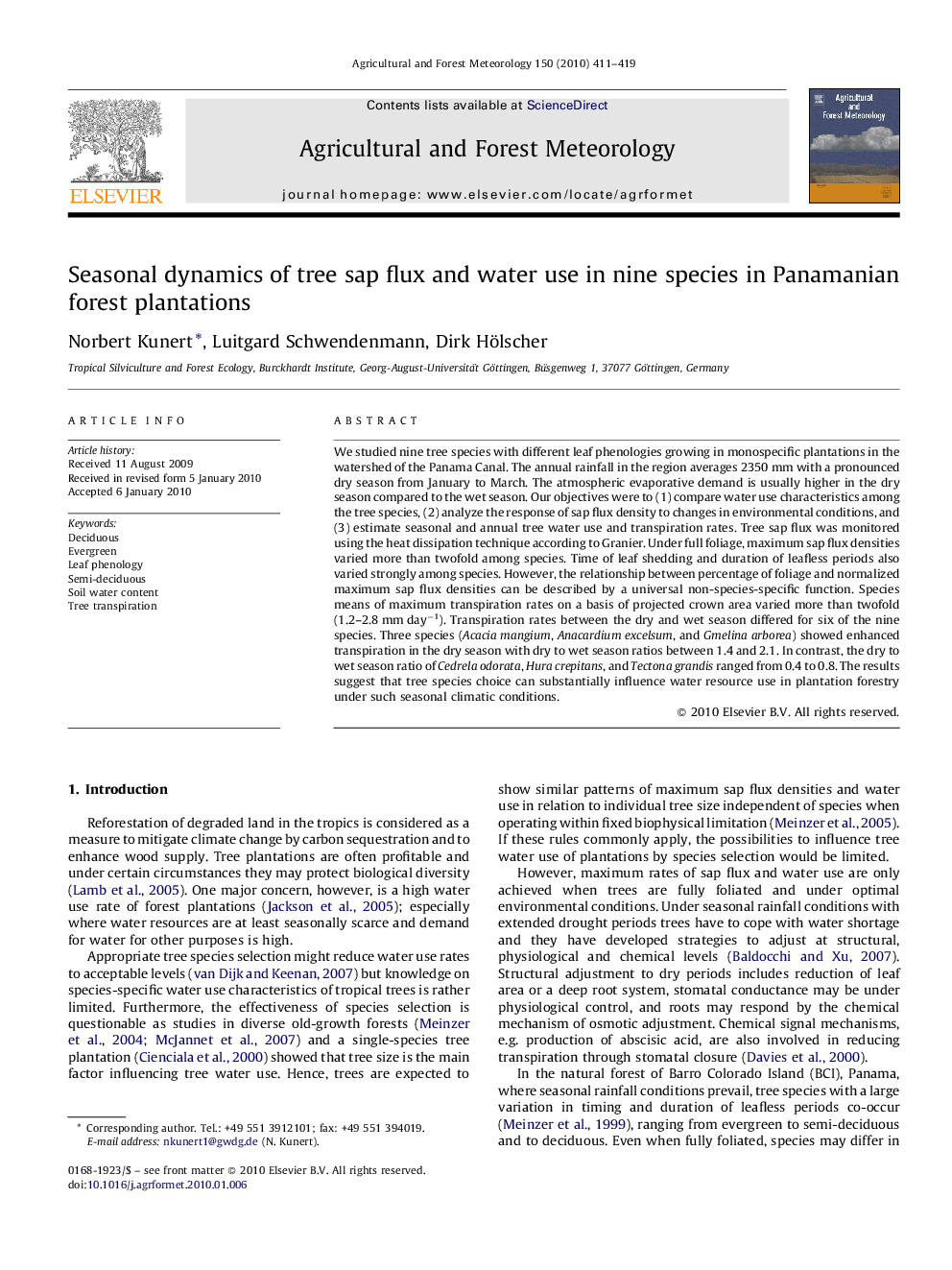| Article ID | Journal | Published Year | Pages | File Type |
|---|---|---|---|---|
| 82267 | Agricultural and Forest Meteorology | 2010 | 9 Pages |
We studied nine tree species with different leaf phenologies growing in monospecific plantations in the watershed of the Panama Canal. The annual rainfall in the region averages 2350 mm with a pronounced dry season from January to March. The atmospheric evaporative demand is usually higher in the dry season compared to the wet season. Our objectives were to (1) compare water use characteristics among the tree species, (2) analyze the response of sap flux density to changes in environmental conditions, and (3) estimate seasonal and annual tree water use and transpiration rates. Tree sap flux was monitored using the heat dissipation technique according to Granier. Under full foliage, maximum sap flux densities varied more than twofold among species. Time of leaf shedding and duration of leafless periods also varied strongly among species. However, the relationship between percentage of foliage and normalized maximum sap flux densities can be described by a universal non-species-specific function. Species means of maximum transpiration rates on a basis of projected crown area varied more than twofold (1.2–2.8 mm day−1). Transpiration rates between the dry and wet season differed for six of the nine species. Three species (Acacia mangium, Anacardium excelsum, and Gmelina arborea) showed enhanced transpiration in the dry season with dry to wet season ratios between 1.4 and 2.1. In contrast, the dry to wet season ratio of Cedrela odorata, Hura crepitans, and Tectona grandis ranged from 0.4 to 0.8. The results suggest that tree species choice can substantially influence water resource use in plantation forestry under such seasonal climatic conditions.
